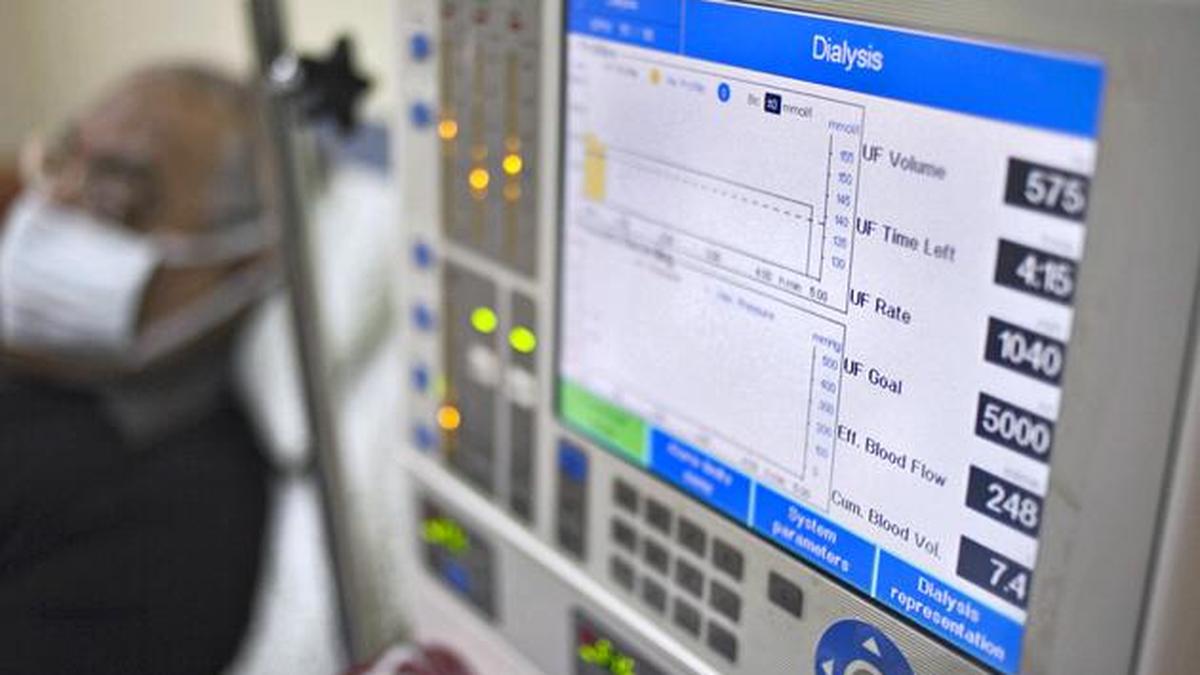Copyright thehindu

A new study by Indian researchers has identified hidden biochemical markers in the blood that could help detect kidney complications in diabetic patients much earlier than current clinical methods allow. The findings, published in the Journal of Proteome Research in July 2025, offer hope for more personalised and timely interventions in a country grappling with a diabetes epidemic. India’s diabetes burden India, often dubbed the diabetes capital of the world, has over 101 million adults living with Type 2 diabetes and another 136 million at risk with prediabetes, according to data from the Ministry of Health and Family Welfare, Government of India, as cited in a Press Information Bureau release dated September 2023. The disease—driven by a combination of genetic, lifestyle, and environmental factors—often remains undiagnosed until serious complications such as kidney failure, vision loss, or nerve damage have developed. Alarmingly, nearly one-third of diabetic patients in India develop chronic kidney disease (CKD). Traditional diagnostic tools like fasting blood glucose, HbA1c, and creatinine tests offer only a partial picture of the disease. “Type 2 diabetes is not just about high blood sugar. It disrupts amino acids, fats, and other pathways in the body. Standard tests often miss this hidden activity, which may begin years before symptoms appear,” said Sneha Rana, a Ph.D. scholar at Indian Institute of Technology (IIT) Bombay and the study’s first author. Study highlights Led by Professor Pramod Wangikar from the IIT Bombay, in collaboration with Dr. Rakesh Kumar Sahay and Dr. Manisha Sahay from Osmania Medical College, and researchers from Clarity Bio Systems India Pvt. Ltd., Pune, the team used metabolomics, the study of small molecules in the blood—to uncover these hidden patterns. The researchers collected whole blood samples from 52 volunteers at Osmania General Hospital in Hyderabad between June 2021 and July 2022. The cohort included 15 healthy individuals, 23 patients with Type 2 diabetes, and 14 with diabetic kidney disease (DKD). Using advanced techniques like liquid chromatography-mass spectrometry (LC-MS) and gas chromatography-mass spectrometry (GC-MS), they scanned for nearly 300 metabolites. They found 26 metabolites that differed significantly between diabetic patients and healthy controls. While some, like glucose and cholesterol, were expected, others, such as valerobetaine, ribothymidine, and fructosyl-pyroglutamate, had not previously been linked to diabetes. “This suggests that diabetes is a much broader metabolic disorder beyond just glucose dysregulation,” said Mr. Wangikar. The study also revealed two distinct subgroups among diabetic patients; one with metabolic profiles closer to healthy individuals, and another showing significant disruptions related to stress, inflammation, and energy metabolism. Future research and purpose “These markers could one day be used by doctors, just like cholesterol tests are used to assess heart disease risk. This means some patients may need more aggressive treatment, while others might benefit more from lifestyle changes,” said Dr. Rakesh Sahay. When comparing patients with kidney disease to the other groups, the team identified seven metabolites, including arabitol, myo-inositol, ribothymidine, and a toxin-like compound called 2PY, that increased progressively from healthy individuals to diabetics to those with kidney disease. “By monitoring these molecules, we could predict kidney complications much earlier,” said Ms. Rana. “These markers could replace or add on to the existing markers like creatinine, eGFR estimation and measuring albuminuria by identifying those diabetics at risk of kidney disease even before these markers indicate the onset of kidney dysfunction, facilitating the early use of therapies which prevent progression of kidney disease,” added Dr. Manisha Sahay. Unlike most previous studies that focused on plasma or serum, this research analysed whole blood, capturing metabolites from red blood cells as well. This broader approach may explain why some well-known markers from Western studies, such as branched-chain amino acids (BCAAs), did not show up strongly in the Indian cohort. “The work has potential for clinical translation as a test could be developed based on dried blood spots made from finger pricks, and this is an ongoing work in our lab,” said Mr. Wangikar. The researchers acknowledge the study’s small sample size and plan to expand it to include a larger and more diverse group of patients. Their ultimate goal is to develop simple, affordable clinical tests that can identify individuals at high risk of complications and enable personalised treatment strategies. “In India, we often rely on a one-size-fits-all approach to diabetes treatment. With these new markers, we can start tailoring care to each patient’s unique profile,” Ms. Rana said.



